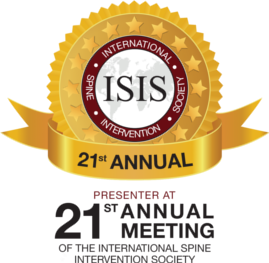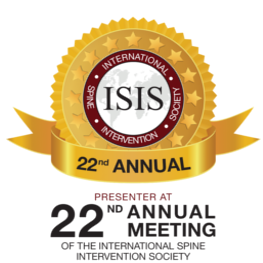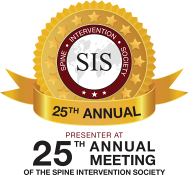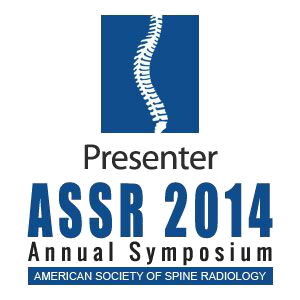Discectomy surgery should be the last resort. Your surgeon should recommend it after conservative treatment options like medication, wearing a brace, and physical therapy fail to treat your back or neck pain like a herniated disc or offer relief to the symptoms. It is a minimally invasive spine surgery that aims to restore function, relieve pain, and improve the quality of your life. This article will teach you the different types of discectomy surgery and why you might require the treatment.
An Overview of Discectomy Surgery
A discectomy is a surgical procedure to remove all or part of your intervertebral disk in the spine. It is a minimally invasive spine surgery that involves the surgeon making a small incision to reach the treatment area. Most surgeons and patients prefer the discectomy surgery to open surgery because the tiny incision can lead to:
- Lowered chances of postoperative pain and infections
- Less reliance on painkillers following the surgery
- Less blood loss during surgery
- Reduced chances of muscle damage
- Less scarring, hence better cosmetic outcomes
- Quicker recovery
An intervertebral disk is a round, flat cushion between the bones (vertebrae) in the spine and serves as the spine’s shock absorbers. All disks have a nuclear pulposus (soft, gel-like center) surrounded by the annulus (flexible outer ring). Intervertebral disks are always under pressure, and the disk can tear, permitting the nucleus gel to leak out. The condition is called a bulging, ruptured, slipped disk (herniated disk).
Additionally, the disc material releases chemical irritants that contribute to nerve inflammation. When your nerve root is irritated, you might experience weakness, pain, or numbness in your leg(s). The health condition is known as sciatica.
When Do You Need Discectomy Surgery?
Your doctor performs the surgery to stop the pain and help you work and move again. However, the physician can consider the decision to perform the surgery based on your lifestyle, overall health, and the severity of your symptoms.
Here are situations in which the physician can recommend surgery:
You Want to Improve Your Mobility
Serious pain in any of your legs, accompanied by numbness or weakness, can make it challenging to do everyday tasks and move around.
You have a Herniated Disk
While a herniated disk can occur in any part of your spine, it is common in the lower back.
Most patients do not experience any signs or symptoms. For individuals with symptoms, the symptoms improve over time. Symptoms vary depending on the location of the disk and whether your disk is pressing on any nerve. The condition impacts one side of the body. These signs include the following:
- Leg or arm pain — If the herniated disc is located in the lower back, you will feel pain in the buttocks, thigh, foot, calf, and lower back. If the herniated disk is in the neck, you will feel a sharp or burning pain in the arms and shoulders. The pain can shoot into your leg or arm whenever you move into specific positions, sneeze, or cough.
- Tingling or numbness — You will experience tingling or radiating numbness in the body part the affected nerves serve.
- Weakness in the affected nerve, causing you to stumble or affecting the ability to hold or lift items
Conservative Treatment Failed
Surgery should be your last resort. Your doctor can also recommend surgery when conservative treatment methods like medication and physical therapy fail to improve your symptoms or treat your condition.
You Have Life-threatening Symptoms
A spinal disc can impact nerves like sciatic nerves in a manner that prevents your bladder or bowels from functioning. If you have this challenge and it is due to a herniated or damaged disc, you might require a surgical procedure to ease pressure on your nerves.
Nerve Damage to Your Spine
Nerves close to your damaged disc can also be compressed. It includes nerves inside your spinal cord or next to it. If this occurs, you might experience pain in the lower back.
You Want to Return to Your Daily Routine or Sporting Activities
For some patients, the goal of treating a bulging disc is returning to normalcy without pain. Having a normal life can be being an athlete, playing games, or doing everyday tasks.
Microdiscectomy Surgery
Microdiscectomy is a procedure that relieves pain, among other signs, that occurs when a herniated disc in your spine presses on your nearby nerve root. It is achieved by removing tiny bone, ligament, and disc fragments, freeing your nerves.
The procedure is a minimally invasive spine surgery because it requires a tiny incision and loupes (surgical glasses or a microscope) to magnify the injury site. Additionally, the surgeon uses tinier instruments and tools to work in the limited spinal space.
Your doctor can use any of the following techniques to reach the nerve and herniated disc:
- Endoscopic microdiscectomy — Also called a microendoscopic discectomy, the surgeon makes an even small incision and uses a miniaturized camera. The technique causes less disruption to your nearby tissues.
- Tubular microdiscectomy — The doctor inserts small dilators or tubes via an incision, creating a corridor through the muscle to be operated.
- Midline microdiscectomy — The physician makes a vertical incision in your back, lifts the neighboring muscles off your vertebrae, and uses equipment to hold apart the tissue layers.
Depending on your doctor's techniques, the microdiscectomy surgical process takes approximately an hour. However, the duration can extend to two hours if the surgeon administered general anesthesia, and you should spend time in the hospital for monitoring.
You can return home the same day after the procedure. Your doctor will advise you on the symptoms that could indicate the need for immediate medical care, including extreme pain, changes in your bowel or bladder movement, and muscle weakness.
You can return to work after two weeks of allowing your soft tissues to recover. Nonetheless, the recovery requires six weeks of modified activities. While you cannot resume normal activities immediately, your lifestyle should not be significantly affected.
You will likely meet with an occupational therapist or physical therapist before the hospital discharges you. These professionals will advise you to reduce the twisting of your back, bending, and lifting. They will also tell you the best exercises to improve the flexibility and strength of muscles around the spine.
Since the microdiscectomy is a specialized treatment requiring a surgeon with special training, the surgery is costly. The surgery costs between $15,000 and $50,0,00, excluding follow-up medical care and appointments. Your health care insurance provider can cover a considerable part of the price after paying your coinsurance and deductible.
If you do not have medical coverage, you can ask your healthcare provider if they can negotiate a lower amount since you are making an out-of-pocket payment.
Anterior Cervical Discectomy and Fusion
Anterior cervical discectomy and fusion treat issues in your throat or the neck via the front. The surgery eases pressure on the spinal cord or nerves in the neck. Additionally, it can help manage specific kinds of arthritis, which can result in significant pain.
Your surgeon can recommend the procedure if conservative treatment options to manage tingling in the hands, serious neck pain, challenges with walking and balance, and numbness and tingling in the fingers and hands fail.
Before the surgery, you will meet with the medical team. The surgeon will conduct a physical examination. They will also ask about your current medication and general health. They can order diagnostic imaging like an MRI or X-ray if they have not already performed them. The tests help them understand the root cause of your symptoms and develop your treatment plan.
Moreover, the physician can give you instructions to follow before the procedure. They include the following:
- Refrain from drinking alcohol a day before the treatment
- Stop taking medication and blood thinners unless the doctor advises you otherwise
- Stop smoking
- Carry a person to take you home following the procedure
What Occurs During the Procedure?
Here is what to expect during the ACDF:
- During your surgery day, your doctor will administer anesthesia that puts you to sleep, preventing you from feeling pain. After sleeping, the physician will make a horizontal incision in your neck. That way, the doctor will move your esophagus and trachea aside.
- The physician will then remove your affected disk and other related bone spurs. Sometimes, the surgeon removes the whole vertebra front. After they remove the bone spurs and disk, they will start spinal fusion. At least two vertebrae will fuse into one bone over time.
- In the gap where your removed disk(s) were, your physician will put a hollow metallic ring or a piece of bone. Typically, the bone originates from a donor (bone bank).
- Next, the surgeon will place screws and a metallic plate in the spine to hold the bones while they fuse.
- Finally, the doctor will close your incision site once everything is returned to place.
After the surgery, the medical practitioner will move you to a space where they will monitor you as you wake up. The physician will tell you when you can return home. They will also give you guidelines to follow following the treatment. The guidelines promote recovery. They are as follows:
- When to sit and walk
- You should engage in light everyday activities but avoid strenuous activities for six weeks.
- You should avoid horseback riding, climbing, motorcycles, or contact sports for over three months.
- Depending on your occupation, you can return to work within six weeks following the procedure, with your doctor’s approval.
Percutaneous Discectomy
Percutaneous discectomy is also known as laser discectomy.
Physicians perform percutaneous discectomy to extract a part of a herniated disc that irritates your nerve roots, alleviating pain. Percutaneous means via a tiny incision or through the skin.
When Do Doctors Recommend Percutaneous Discectomy?
While non-surgical treatments are the first treatment option for disc herniations, your surgeon can perform percutaneous discectomy if any of the following is true:
- The herniated disk is causing pain that affects your everyday routine. The treatment lowers discomfort and promotes mobility as long as your outer walls are not ruptured.
- You have proof of nerve impingement like radiculopathy or sciatica
- Your herniated disc material is pressing on your nerve root
Note you are not eligible for the surgical procedure if any of the following is true:
- You have massive, uncontained herniated discs in your spinal cord
- You have stenosis (spinal canal narrowing)
- Nucleus (disc material) fragments in your spinal column
To determine whether you are an ideal candidate for the surgery, your physician can order imaging tests like an MRI to identify your affected nerve roots and visualize the herniation better. The specialist should discuss other treatment options with you if you are not eligible.
How the Procedure is Performed
First, your doctor will sedate you while you lie in a prone position. The sedative is designed to help you remain calm.
Next, the physician will use a small needle to administer local anesthesia. Once your surgical site is numb, the doctor will introduce a larger needle or probe into your skin and the affected intervertebral disc. Thanks to fluoroscopic guidance.
When the needle or probe is in its ideal position, it removes the herniated disc’s size alongside unwanted materials using heat or radio waves. Removing the disc tissues from your disc lowers disc pressure and alleviates pain. After your surgery, the healthcare provider will send you to a monitoring room.
The percutaneous discectomy is an outpatient procedure that takes about thirty minutes. You can return home after three hours.
Note the injection site will be sore for one to two days after the surgical procedure. You can take medications and use heat or cold packs to relieve the soreness. You should also limit your activity to 24 hours.
Is the Surgery Safe?
It is a practical, minimally invasive, and safe procedure that offers patients relief from back pain. Like every surgical intervention, percutaneous discectomy has complications, although less than open surgery. They are as follows:
- Reaction to anaesthesia
- Reduced nerve irritation
- Less bleeding
- Less discomfort and pain
The success rate of this type of discectomy surgery depends on numerous factors, including the following:
- The extent of your spinal nerve compression
- The duration you have suffered from a herniated disc
- Whether you have a pre-existing health condition like hypertension, diabetes, or obesity
- The herniated disc severity
Endoscopic Discectomy
Endoscopic discectomy is a newer surgical treatment for a single herniated disk. The minimally invasive treatment involves using an endoscope, a tube with a camera, that permits your surgeon to see and access your affected region. The approach is identical to arthroscopic therapy for shoulders, hips, and knees.
Your doctor will first help you understand the treatment’s pros, cons, and complications to determine whether you qualify for the procedure. The physician will also inquire about your insurance and medical history. Let them know if you are allergic to anesthesia or have a pre-existing condition like hemophilia or diabetes.
Your surgeon can recommend the procedure to treat the health conditions below:
- Radiculopathy
- Radiculitis
- Cervical herniated disc
- Disc tear
- Cervical disc neuritis
During the surgery, the following will happen:
- The doctor will administer general anesthesia that will cause you to sleep or sedation and local anesthesia to keep you awake and relaxed; the treatment area will be numb with medication.
- Your surgeon will make an incision to access the spine near your herniated disk.
- Next, the surgeon will insert a guide wire via your incision and carefully guide the wire toward your affected disk. Thanks to X-ray (fluoroscopic) guidance. The doctor then threads the endoscope attached to a camera over the guidewire and into the herniated disk.
- After the endoscope is positioned, your physician can see your herniated disk and the neighboring structures on a video monitor. The doctor uses water to visualize your spine better, allowing them to address the issue under better magnification.
Since the surgery is minimally invasive, you can return home within a day after the procedure. The surgeon will give you post-recovery guidelines to follow. The guidelines ensure you protect the spine until you recover fully. They include the following:
- Activity limitations — You should avoid repetitive tasks, lifting heavy things, and high-impact activities that require moving your spine for three weeks. You should also keep off twisting or bending your lumbar spine.
- Walking — It promotes blood flow and reduces the chances of experiencing blood clots during recovery.
- Your surgeon can recommend wearing a back brace.
- Take your medication as prescribed.
- Ensure you eat a lot of proteins and vitamins after the treatment; these foods promote the recovery of wounds and tissues.
- You should undergo an imaging test after six (6) weeks to examine your incision recovery and check the spine alignment.
Find a Qualified Neurointerventional Surgeon Near Me
Dealing with chronic pain and injuries in your back or neck is debilitating and can prevent you from enjoying your favorite activities. At LAMIS, your comfort and health are our priorities, and we take pride in offering individualized neurosurgical care using world-class techniques. We can discuss the available treatment options, and if surgery is determined to be the best option, we recommend discectomy. Our Los Angeles-based professional care team will support and guide you through all process steps, from initial consultation to recovery. For a comprehensive examination and to determine whether you qualify for the procedure, call us at 310-734-6088.






